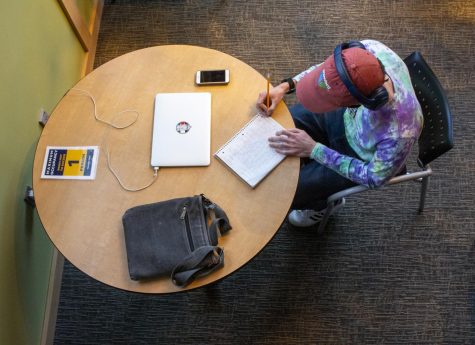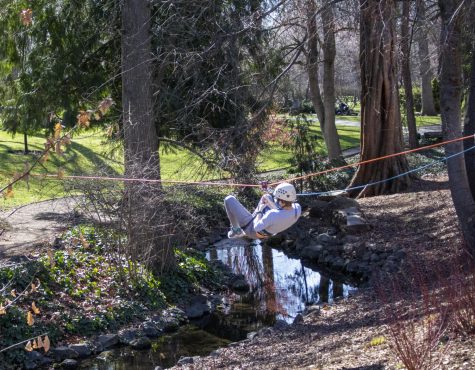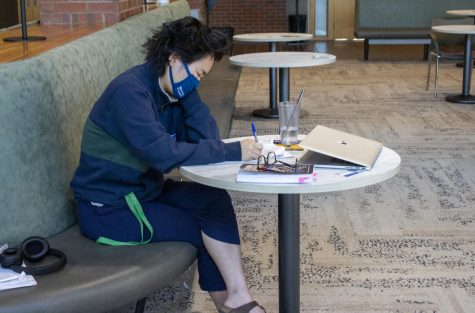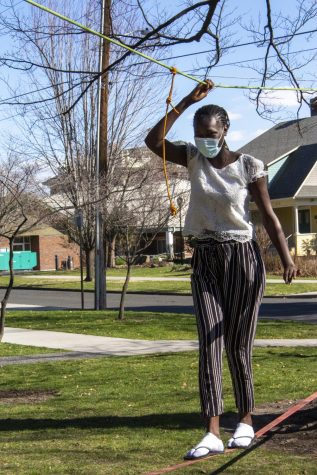Students react to split-up spring break
Students weigh pros and cons of disjointed spring break days
April 1, 2021
This semester, spring break is divided across five separate weeks, with one day of each week allocated for a “spring break day.” While many students feel that this is reasonable in order to prevent the spread of COVID-19 on campus and in Walla Walla, it also prevents students from receiving a much-needed recharge from classes and work.
Senior Tori Parker appreciates the nuances of the situation, but feels that the spring break days prevent students from actually taking a break.
“These spring break days are advertised as being days for our health and wellness; I just don’t think that it’s sufficient to actually make an impact. A single day just doesn’t cut it, really, in terms of really recuperating,” Parker said.

Sophomore Cateline Lipham believes that a spring break is necessary for the mental wellness of college students and is sorely missed by the current student body.
“I completely understand that you don’t want people traveling because we’re in a pandemic, and the best way for an institution to try to stop people traveling, when they don’t actually have control over what people do, is to eliminate the opportunity for them to do so,” Lipham said. “But I think it essentially eliminates the purpose of the spring break, which I see as an opportunity to not only take a mental and physical break from the day to day life of working and school but to also become reenergized about learning. I think that one of the benefits of Whitman’s two-week spring break is that it not only gives you enough time to relax [and] recharge, but [it also lets you] want to come back to classes again and want to get back to your normal schedule.”

The health and safety of the Whitman community seems to have been the top priority for the administration in terms of the new spring break model, but the changes that have been made do not account for the mental strain placed on students, faculty and staff without that break.
First-year Ryan Margolis does not think that the new model is healthy for students and professors. “My professor was talking about how he’s always had this half-way break in the semester to plan curricula around and also to plan a break in your head to know that you have this period where you can stop working and not have academia be part of the equation of your day to day life,” Margolis said. “And when you don’t have that break, instead of a nice jog, it becomes a marathon and a lot of people aren’t ready for a marathon.”
“On the one hand, I understand why they’re doing it and I appreciate that Whitman is making an effort to ensure our safety by cutting down on potential travel; I appreciate that they clearly have our physical health in mind,” Parker said. “But at the same time, I don’t feel like the current arrangement is very conducive to our mental health.”
For a community already trying to navigate school during a pandemic, the lack of a real break runs the risk of overburdening and harming the mental and physical well-being of both students and professors.
Students feel that Whitman professors, as opposed to the administration, are more sympathetic to the issues, to mental burnout and anxiety, that come with the lack of a real spring break.
“Generally, I feel like there’s a lot of compassion from professors,” Lipham said. “I go to class and feel burnt out and I feel like my professors are burnt out so there’s a camaraderie there. I just feel a little less compassion from [the administration]. In no way do I think they’re trying to create a negative environment, but I think, perhaps, a little more thought could’ve gone into ‘Is this actually a good thing?’ Logistically, this seems on paper like it’s the best option, but in reality, will this actually help?”
Most professors appear to be in the same boat as students feeling that without a recuperation period it will be harder to remain energetic and productive throughout the remainder of the semester.

“I honestly wish that the impact, or lack thereof, would be more directly acknowledged in terms of our mental health and our stress levels.” Parker said. “Seeing it constantly advertised as ‘Oh, this is your spring break!’ feels a little bit disingenuous, especially when I have massive assignments due immediately afterward; and while I appreciate my professors telling me not to do any work that day, it doesn’t feel like a reasonable or feasible course of action.”
While professors may be trying to honor the spirit of the smaller break days by telling students to take the day off, students may not have the option to set aside homework, papers and exams for 24 hours, especially if big assignments keep coming regardless of whether or not there is class.
“One day isn’t really a break… I still got work to do and that’s kind of how I think I’m taking it and how other students are taking it, but then there’s also the sentiment of ‘Oh, this is the one break day that we get for two weeks, we gotta really take advantage of it’, so it is really confusing,” Margolis said.
Motivation is also a huge issues for students trying to navigate this new schedule. Lipham shares that her motivation and interest in school are already deteriorating and a longer break would be more helpful to get back on track.
“I’m doing my best but it’s becoming harder to mentally motivate myself to engage with work the way I’m paying this school to have me be engaged with work… It gets harder to do that when there’s no stopping place,” Lipham said.
In consideration of other models that could have been considered, Parker brought up that perhaps the main element that the college could have kept in mind was that every student signed a community agreement to minimize the risk of spreading the virus and that students would most likely honor this.
“Another thing, though, is we all signed the Community Pledge; if the expectation is that we’re not going to travel, maybe they could trust us not to travel. I feel like the vast majority of students would honor a commitment that they made not to travel,” Parker said.

With all this in mind, students will hopefully still try to make the best of this token break that has been given. The semester will continue at its normal pace, but perhaps everyone will find that taking the day to care for mental health over work is more important even though there is not much time to take off.
Margolis tries to exemplify this sentiment of making the best of the situation and hopes that the school will help students out in this endeavor.
“I think if we are going to be doing this model of spring break, the school needs to be putting in more of an effort to have events on campus… If you’re not allowing us to go off campus, please have something for us to do on campus,” Margolis said.





